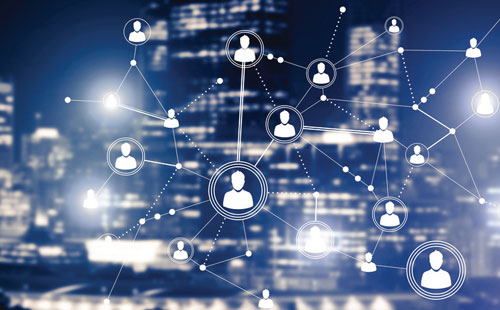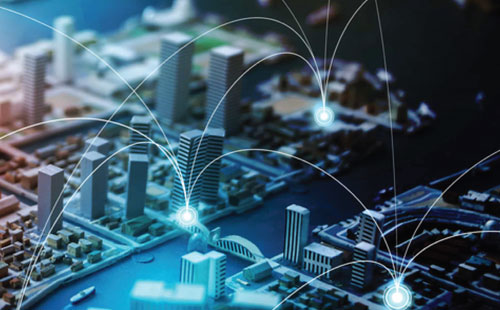A New Era Of Hyper-Personalization
Sunday, 14 August 2022, 23:17 IST
Nowadays, organizations are actively and consistently working to create hyper-personalization. Due to the extreme personalization done in realtime, the brands that want to grow, compete, and succeed are sitting up and paying attention. Organizations have seen the vast opportunities in this new reality that hyper-personalization presents. IDC claims in the future of customer experience, the relationship between customers and businesses will be built on cognitive empathy requiring business leaders to make strategic decisions that emphasize experiences, journeys, trust and satisfaction.
Today's marketplace is constantly fluctuating. Businesses are not only envisioned to meet customers' needs, but they also need to anticipate and surpass them. Organizations need to adapt by harnessing the strength of analytics and artificial intelligence to make the necessary changes to endure and thrive. Having a robust marketing strategy isn't enough anymore. As consumer expectations revise, the competition becomes more challenging, and data gets more complex. Chief marketing officers are under immense stress to contemporize their marketing approach. This has added intricacy to their roles and placed them at the heart of organizational success. This is where hyper-personalized and AI-powered marketing strategy is helping CMOs to create stronger, more authentic interactions with customers, and effectively using technologies to capitalize on data for insights-driven results.
In a data-driven world, hyper-personalization has become critical in differentiating successful businesses from the pack. Considering all the data, including customer demographics, browsing history, purchase history, and more can create a truly customized user experience that will keep customers coming back for more with CRM data.
How Hyper-personalization is changing the businesses scenario?
With proper personalization in the digital age, businesses leverage both explicit and implicit means to profile their customers. Take the example of Amazon; how do its Customers receive highly contextualized emails with personalized product recommendations? Amazon uses a recommendation engine algorithm called `item-to-item collaborative filtering' to suggest products based on key data points,create user profiles and craft a highly contextualized email for the shopper. As a result, the product recommendation engine generates over 35 percent conversion by creating unique, hyper-personalized experiences for each customer.

Amazon Considers Data From:
•Customer demographics
•Search query
•Average time spent on searches
•Past purchase history
•Brand affinity
•Category browsing habits
•Time of past purchases
•Average spend amount
Considering Netflix as another example, it is recognized as the first company to deliver a high level of personalization in media entertainment through data science. Netflix leverages data analytics for business victory in two significant ways. The first is its capability to offer a personalized suggestion system to its subscribers to keep them involved. The second is to leverage data to produce their content strategy.
Netflix's customer ratings of its film or television programs feed into its recommendation system. However, while explicit user ratings play a vital role in Netflix's recommendation system, Netflix acknowledges that the implicit signal is more robust. Through the analysis of implicit data such as viewing behavior, Netflix seeks to match viewers with the programming they might like to see depending on the mood or time of day. This means that Netflix can track when users start, stop, rewind, fast forward videos and can also identify the time of day, location and the device on which the streaming occurs.

Netflix operates on an algorithm to predict content that users will want to see. It combines behavioral characteristics with predictive learning to send 103 million users unique movies and show recommendations to increase engagement and loyalty. Netflix's recommendation engine has been critical to customer retention as 80 percent of users follow through on a suggestion, and only 20 percent search for content.
Netflix considers data from:
•Customer behaviors(including viewing history, ratings, viewing times, preferred device, viewing duration)
•Movie information (including titles, genres, categories, actors, release year, and more)
•Members with similar tastes and preference
Why Hyper-Personalization is the need of the hour in the Post-Pandemic Era?
When the pandemic hit, more customers began to use digital platforms for daily tasks such as buying groceries, opening a bank account, purchasing medicines, and more, thus transforming customer relations and expectations. The digital interactions resulted in significant customer data gathered from diverse applications. Indian organizations can leverage this opportunity led by the pandemic through `hyper-personalization'. The customer experience has grown and highlights the need for effective use of customer data and hyper-personalized engagement. As good customer experience frequently influences future purchase decisions, increasing customer engagement and satisfaction is the principal business focus for about one-fifth of the Indian organizations, according to IDC India Digital Transformation Survey, April 2022.
“COVID-19 has had a significant effect on how brands interact with customers. Customer communications will need to be more aggressive, consistent, and scalable. Hyper-personalization can serve the aim of retaining more customers”, expresses Rithika Ponnala, Senior Market Analyst, Digital Transformation practices, IDC India.
Hyperpersonalization is a common practice involving data, analytics/AI, and automation to personalize the consumers in the most effective ways. With increased hyper personalization, businesses can enhance their customer engagement and experience. "While the tsunami of data is overwhelming, it presents many great opportunities like augmented efficiency to enhanced user experience. Organizations are drawing and holding users' attention through personalized communication and customized experience and creating a hyper-personalized user experience", states Neha Gupta, Senior Research Manager, IDC India.
Today's marketplace is constantly fluctuating. Businesses are not only envisioned to meet customers' needs, but they also need to anticipate and surpass them. Organizations need to adapt by harnessing the strength of analytics and artificial intelligence to make the necessary changes to endure and thrive. Having a robust marketing strategy isn't enough anymore. As consumer expectations revise, the competition becomes more challenging, and data gets more complex. Chief marketing officers are under immense stress to contemporize their marketing approach. This has added intricacy to their roles and placed them at the heart of organizational success. This is where hyper-personalized and AI-powered marketing strategy is helping CMOs to create stronger, more authentic interactions with customers, and effectively using technologies to capitalize on data for insights-driven results.
As good customer experience frequently influences future purchase decisions, increasing customer engagement and satisfaction is the principal business focus for about one-fifth of the Indian organizations, according to IDC India Digital Transformation Survey, April 2022
In a data-driven world, hyper-personalization has become critical in differentiating successful businesses from the pack. Considering all the data, including customer demographics, browsing history, purchase history, and more can create a truly customized user experience that will keep customers coming back for more with CRM data.
How Hyper-personalization is changing the businesses scenario?
With proper personalization in the digital age, businesses leverage both explicit and implicit means to profile their customers. Take the example of Amazon; how do its Customers receive highly contextualized emails with personalized product recommendations? Amazon uses a recommendation engine algorithm called `item-to-item collaborative filtering' to suggest products based on key data points,create user profiles and craft a highly contextualized email for the shopper. As a result, the product recommendation engine generates over 35 percent conversion by creating unique, hyper-personalized experiences for each customer.
Amazon Considers Data From:
•Customer demographics
•Search query
•Average time spent on searches
•Past purchase history
•Brand affinity
•Category browsing habits
•Time of past purchases
•Average spend amount
Considering Netflix as another example, it is recognized as the first company to deliver a high level of personalization in media entertainment through data science. Netflix leverages data analytics for business victory in two significant ways. The first is its capability to offer a personalized suggestion system to its subscribers to keep them involved. The second is to leverage data to produce their content strategy.
Netflix's customer ratings of its film or television programs feed into its recommendation system. However, while explicit user ratings play a vital role in Netflix's recommendation system, Netflix acknowledges that the implicit signal is more robust. Through the analysis of implicit data such as viewing behavior, Netflix seeks to match viewers with the programming they might like to see depending on the mood or time of day. This means that Netflix can track when users start, stop, rewind, fast forward videos and can also identify the time of day, location and the device on which the streaming occurs.
Netflix operates on an algorithm to predict content that users will want to see. It combines behavioral characteristics with predictive learning to send 103 million users unique movies and show recommendations to increase engagement and loyalty. Netflix's recommendation engine has been critical to customer retention as 80 percent of users follow through on a suggestion, and only 20 percent search for content.
Netflix considers data from:
•Customer behaviors(including viewing history, ratings, viewing times, preferred device, viewing duration)
•Movie information (including titles, genres, categories, actors, release year, and more)
•Members with similar tastes and preference
Why Hyper-Personalization is the need of the hour in the Post-Pandemic Era?
When the pandemic hit, more customers began to use digital platforms for daily tasks such as buying groceries, opening a bank account, purchasing medicines, and more, thus transforming customer relations and expectations. The digital interactions resulted in significant customer data gathered from diverse applications. Indian organizations can leverage this opportunity led by the pandemic through `hyper-personalization'. The customer experience has grown and highlights the need for effective use of customer data and hyper-personalized engagement. As good customer experience frequently influences future purchase decisions, increasing customer engagement and satisfaction is the principal business focus for about one-fifth of the Indian organizations, according to IDC India Digital Transformation Survey, April 2022.
“COVID-19 has had a significant effect on how brands interact with customers. Customer communications will need to be more aggressive, consistent, and scalable. Hyper-personalization can serve the aim of retaining more customers”, expresses Rithika Ponnala, Senior Market Analyst, Digital Transformation practices, IDC India.
Hyperpersonalization is a common practice involving data, analytics/AI, and automation to personalize the consumers in the most effective ways. With increased hyper personalization, businesses can enhance their customer engagement and experience. "While the tsunami of data is overwhelming, it presents many great opportunities like augmented efficiency to enhanced user experience. Organizations are drawing and holding users' attention through personalized communication and customized experience and creating a hyper-personalized user experience", states Neha Gupta, Senior Research Manager, IDC India.
